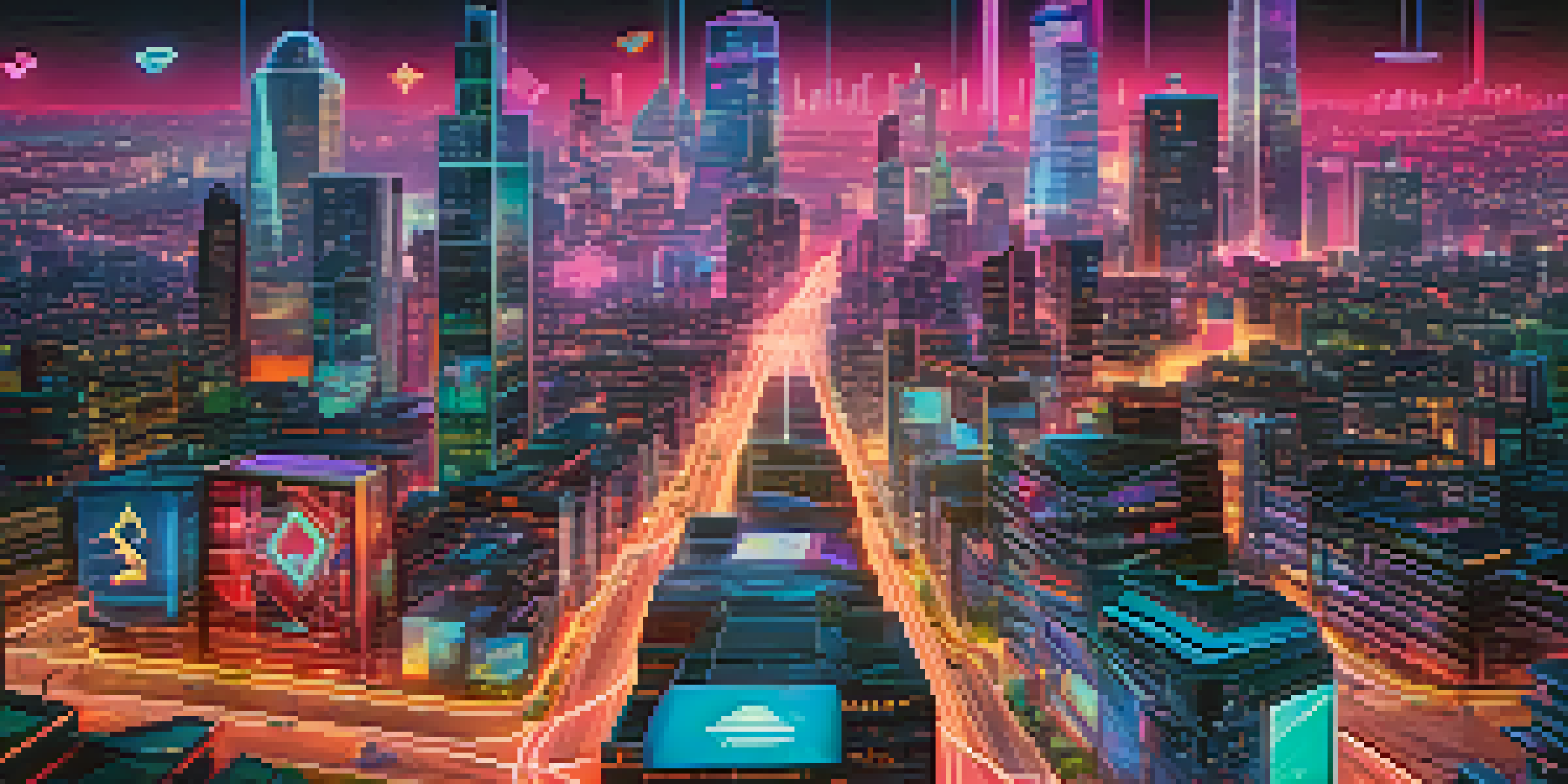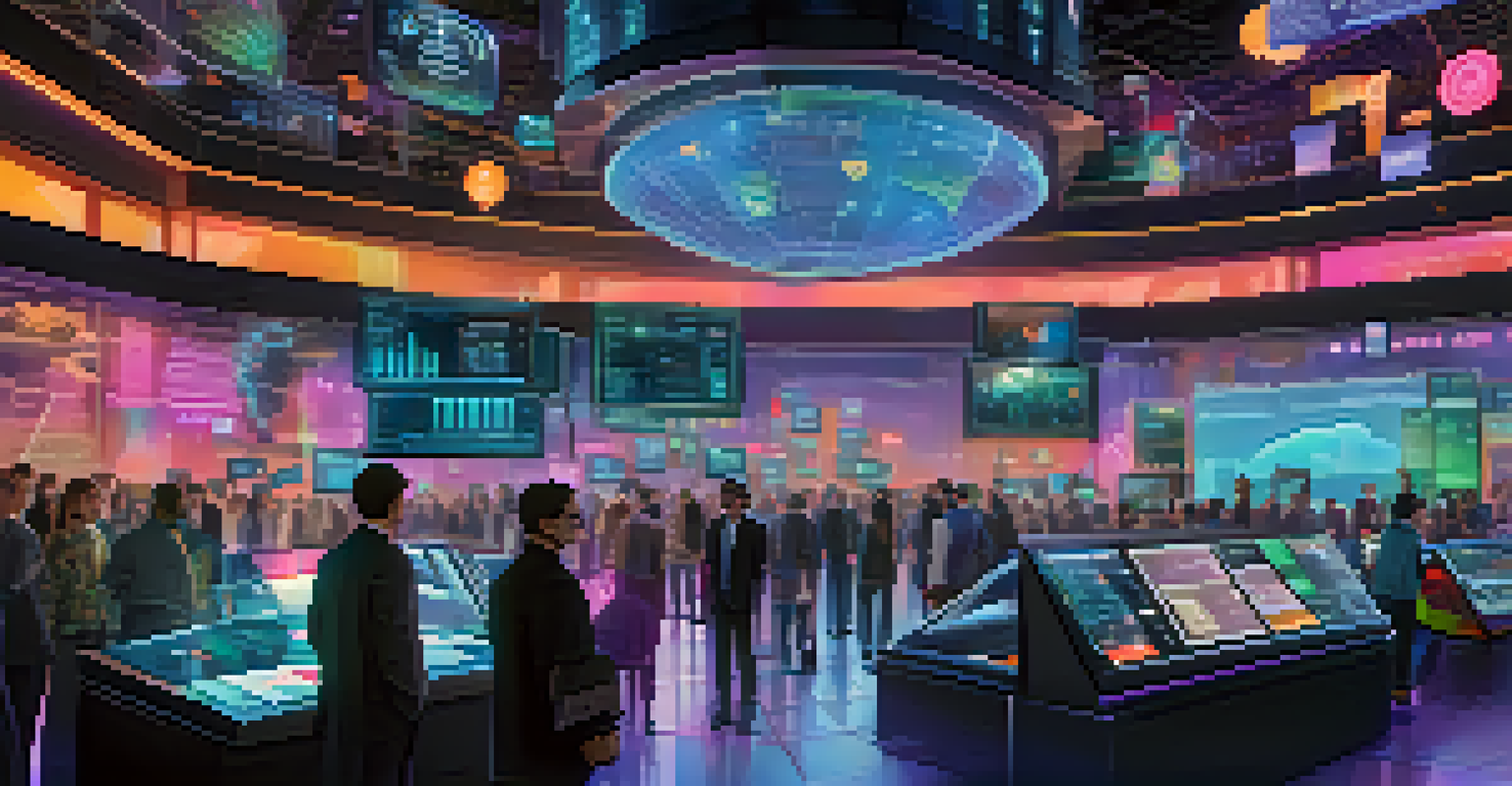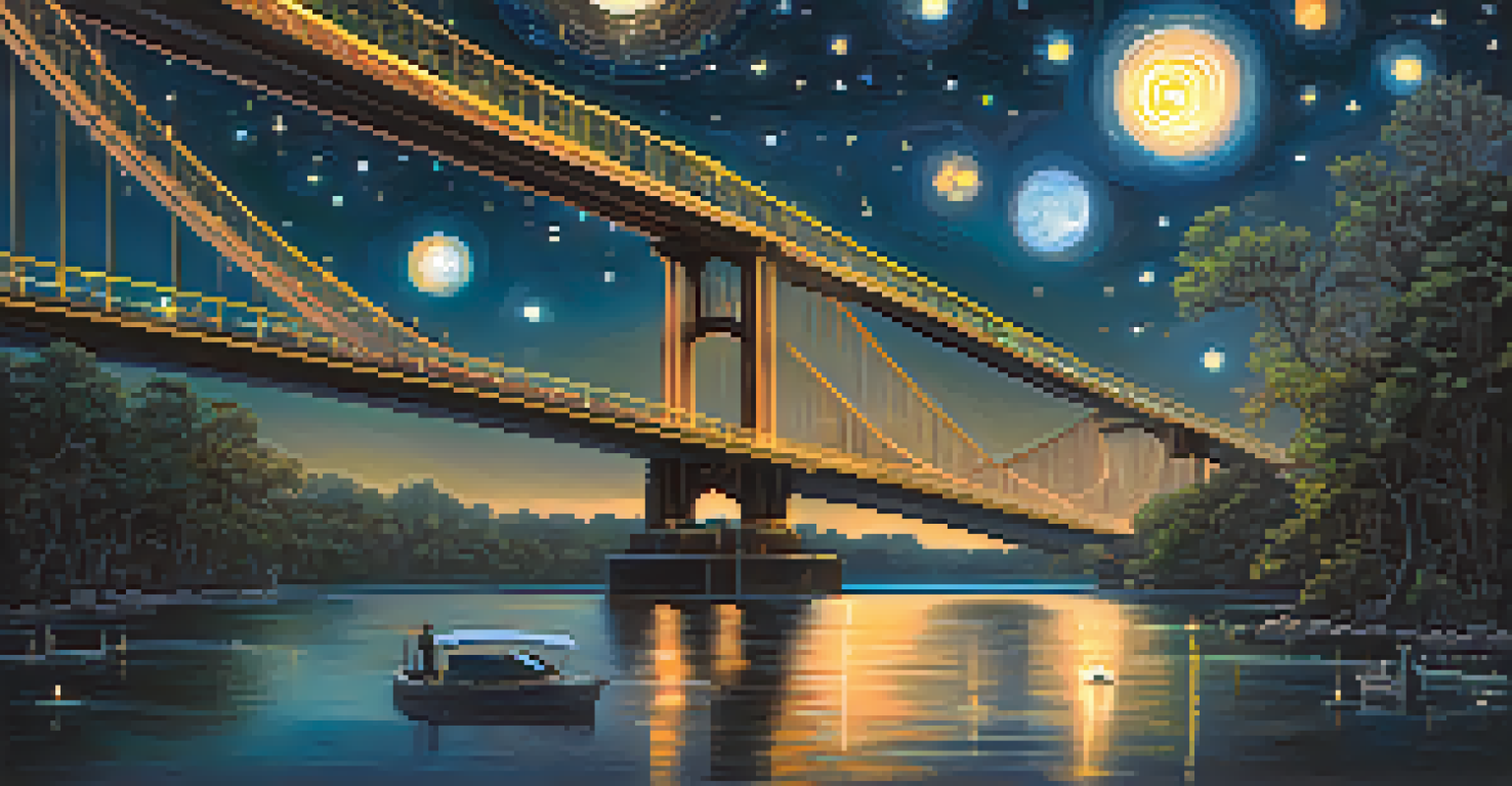The Future of NFTs: Merging with DeFi Innovations

Understanding NFTs and DeFi: A Quick Overview
Non-fungible tokens (NFTs) have taken the digital world by storm, serving as unique identifiers for ownership of digital assets. They represent everything from digital art to virtual real estate, making them a fascinating addition to the blockchain ecosystem. On the other hand, decentralized finance (DeFi) refers to financial services that operate without central authorities, utilizing smart contracts and blockchain.
NFTs provide a unique way to represent ownership and provenance of digital assets, reshaping how we value creativity in the digital space.
At their core, NFTs and DeFi both leverage the power of blockchain technology, but they function in different realms. While NFTs focus on ownership and uniqueness, DeFi emphasizes financial services like lending, borrowing, and trading. Understanding both concepts is crucial as we explore their potential synergy.
As the digital landscape evolves, the intersection of NFTs and DeFi presents exciting opportunities. By merging these two innovative sectors, we can unlock new functionalities and enhance user experiences in the digital economy.
How NFTs Can Enhance DeFi Platforms
NFTs can add a unique layer of value to DeFi platforms by representing collateral or staking assets. For example, an NFT might symbolize ownership of a unique digital artwork that can be used as collateral for a loan. This approach not only diversifies the types of assets available in DeFi but also enhances liquidity.

Moreover, integrating NFTs into DeFi can create new revenue streams for creators and investors alike. Artists can earn royalties every time their NFT is used as collateral, fostering a sustainable ecosystem. This innovation could attract more users to DeFi platforms seeking unique investment opportunities.
NFTs Enhance DeFi Platforms
Integrating NFTs into DeFi can create unique collateral options and new revenue streams for artists and investors.
As these integrations develop, we are likely to see a shift in how users perceive value in digital assets. By linking NFTs to DeFi, we can transform art and collectibles into dynamic financial assets, pushing the boundaries of what is possible in the digital economy.
The Role of Liquidity Pools in NFT Valuation
Liquidity pools are vital in DeFi as they allow users to buy and sell assets without relying on traditional exchanges. When NFTs are included in these pools, they can significantly impact their valuation and market dynamics. Imagine having a pool where users can trade rare collectibles; it could lead to more stable prices and increased market interest.
Decentralized finance is not just about financial services; it's about creating a new paradigm for how we interact with money and assets.
By introducing NFTs into liquidity pools, we create a marketplace that encourages trading and price discovery. Users are not only able to engage with these unique assets but can also benefit from the liquidity provided by others. This creates a robust ecosystem where value can be realized more fluidly.
As liquidity pools continue to evolve, they are likely to play a crucial role in determining the future of NFT markets. The interaction between NFTs and liquidity can lead to innovative valuation methods, making previously static assets more dynamic and appealing to investors.
Interoperability: Bridging Different NFT Ecosystems
Interoperability refers to the ability of different systems to work together seamlessly. In the context of NFTs and DeFi, this means allowing NFTs created on one platform to interact with DeFi services on another. For example, imagine being able to use an NFT from one game as collateral in a DeFi platform that operates independently; this would open up countless possibilities.
Achieving interoperability can enhance the utility of NFTs, creating a more interconnected digital economy. Users would have the freedom to transport their digital assets across platforms, increasing their value and fostering a more vibrant marketplace. This interconnectedness could redefine ownership in the digital realm.
Interoperability Boosts Value
Allowing NFTs to work across different platforms enhances their utility and fosters a more interconnected digital economy.
As developers focus on building bridges between various ecosystems, we can expect to see a surge in innovative uses for NFTs. This could lead to a more cohesive digital landscape where users can leverage their NFTs across multiple platforms, unlocking greater potential.
The Impact of DAOs on NFT and DeFi Collaboration
Decentralized Autonomous Organizations (DAOs) are organizations governed by smart contracts, allowing communities to make decisions collectively. They can play a pivotal role in the collaboration between NFTs and DeFi by enabling users to pool resources for investing in unique assets. For instance, a DAO could fund the purchase of a high-value NFT, allowing members to share ownership and benefits.
This collective approach not only democratizes access to valuable digital assets but also fosters a sense of community among investors. By pooling resources, members can engage in higher-value transactions that might be out of reach individually. This could lead to a new wave of investment strategies focused on collective ownership.
As DAOs continue to gain traction, their influence on the NFT and DeFi spaces will likely grow. They provide a framework for collaborative investment, opening doors for more people to participate in the digital asset economy and share in its rewards.
Future Trends: NFTs and DeFi in the Next Decade
Looking ahead, the fusion of NFTs and DeFi is likely to give rise to innovative applications that we can only begin to imagine. We may see NFTs utilized as proof of ownership for physical assets, such as real estate, seamlessly integrated into DeFi lending platforms. This could revolutionize how we think about asset ownership and liquidity.
Additionally, as technology advances, we might witness enhanced user experiences through augmented reality (AR) and virtual reality (VR). These technologies could allow users to interact with NFTs in immersive environments while leveraging DeFi services simultaneously, making the digital economy more engaging and accessible.
DAOs Democratize Asset Ownership
Decentralized Autonomous Organizations enable collective investment in valuable NFTs, promoting community and shared benefits.
As we embrace these potential trends, it’s essential to remain adaptable and open-minded. The future of NFTs and DeFi is a collaborative journey, and how we navigate this evolving landscape will shape the digital economy for years to come.
Challenges Ahead: Navigating the NFT and DeFi Landscape
Despite the promising future of NFTs and DeFi, challenges remain. Issues such as regulatory uncertainty, security vulnerabilities, and market volatility can hinder the growth of these sectors. Navigating these obstacles will require collaboration between developers, regulators, and the community to establish a safe and sustainable environment for innovation.
Additionally, the environmental impact of blockchain technologies is a growing concern. As the demand for NFTs and DeFi services increases, so does the energy consumption associated with their underlying networks. It's crucial for developers to prioritize eco-friendly solutions and explore alternative consensus mechanisms to mitigate this impact.

Addressing these challenges head-on will be vital for the responsible growth of NFTs and DeFi. By fostering open dialogue and innovative thinking, we can create a more resilient digital economy that benefits everyone involved.